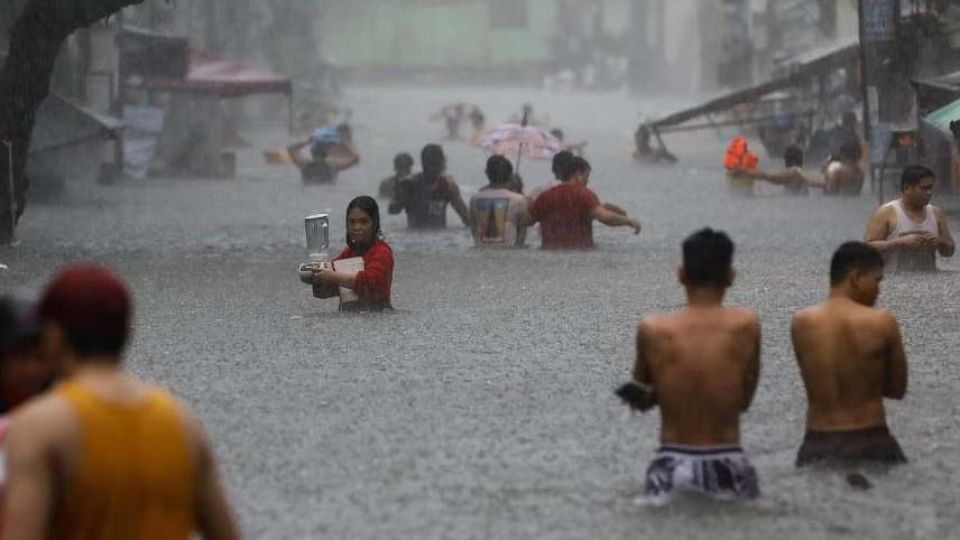July 25, 2024
SINGAPORE – When disaster strikes, the instinct is to rebuild as quickly as possible.
But as extreme weather events become more frequent and intense, this reflex could place affected communities at greater risk of harm and lock them in a perpetual cycle of costly rebuilding and recovery, a top UN disaster official said.
Deciding between the speed of the recovery – which can take years – and its quality is a major dilemma for politicians and government agencies.
“There’s a lot of pressure to recover quickly. But there is the likelihood you will build it not better but worse than what it was before,” said Mr Kamal Kishore, Special Representative of the UN Secretary-General for Disaster Risk Reduction, calling this impulse the “tyranny of rush”.
That means the rebuilt homes, farms, roads and other infrastructure might not be able to withstand the next disaster. “It is better to take a bit more time,” Mr Kishore told The Straits Times, acknowledging this might not always be the most popular idea.
Governments are increasingly under pressure to better manage recovery efforts after disasters linked to climate change occur. Extreme weather events are the costliest and most frequent disasters. These can have a very long-term impact on lives, health, and on supply chains and key economic sectors.
On July 24, the Philippines placed its capital region under a state of calamity as monsoon rains intensified by Typhoon Gaemi submerged swathes of Manila. Gaemi, which strengthened into a powerful Category 4 storm, was on course to sweep across northern Taiwan later on July 24 and then hit southern China.
Globally, natural disasters caused US$250 billion (S$336 billion) in losses in 2023, of which 76 per cent were weather-related, according to global reinsurer Munich Re.
Poorer nations are the most vulnerable as they have fewer resources and money to cope, especially when faced with repeated events, such as storms and floods.
In 2024, the world has suffered a dizzying number of floods, storms, heatwaves, wildfires and droughts.
Hurricane Beryl rampaged across Mexico, the US and parts of the Caribbean recently, causing dozens of deaths and more than US$6 billion in damages.
More than 80,000 people across the Caribbean islands of Grenada, and St Vincent and the Grenadines were affected, with many homes destroyed or damaged by the hurricane, which also flooded Houston, Texas, in the US and left several million people without power.
Hurricane Beryl is the first storm in the Atlantic region in 2024, with forecasters expecting an above-average number of storms during the year’s hurricane season from June to November.
China has also been hit by devastating floods, heatwaves and droughts.
The damage from climate disasters goes beyond homes and infrastructure. Increasingly, frequent extreme weather events are exposing millions of people to food insecurity and water shortages, adding to the challenges faced by people in the aftermath of a disaster.
Yet even as the number of weather and climate-related disasters grows, there are opportunities to build back better and this should be the priority, said Mr Kishore, who is also head of the UN Office for Disaster Risk Reduction (UNDRR).
Building resilience to disasters strengthens communities and economies, he said.
The UNDRR says every US$1 invested in risk reduction and prevention can save up to US$15 in post-disaster recovery. Every US$1 invested in making infrastructure disaster-resilient saves US$4 in reconstruction.
“It is really important that the whole issue of investment in resilience, or in disaster risk reduction, is seen as an integral part of the development processes,” said Mr Kishore, an Indian national with nearly three decades of experience in disaster risk reduction, climate action and sustainable development.
“I want every school, every health facility, every bridge, every airport to be resilient to the kinds of disasters we are going to face in the future.”
In developing countries, 50 per cent of the infrastructure they will need by 2050 is yet to be built. “This is a challenge, but there’s also an opportunity to get this right,” Mr Kishore said.
Many countries have set up more formal mechanisms of supporting post-disaster recovery, Mr Kishore said.
“This was not the case 15 to 20 years ago. The needle has begun to shift from just focusing on immediate biscuits and blankets to livelihoods, houses, to providing farmers with agricultural implements so that they can go back to work.”
India has the National Disaster Response Fund, which is for recovery and reconstruction. Indonesia launched its Disaster Risk Financing and Insurance Strategy in 2018 to boost disaster management and response. The US has the Federal Emergency Management Agency, while Australia has the Disaster Ready Fund.
Mr Kishore said bringing together different government and economic sectors in the recovery planning process is key, too – not just for climate-related disasters, but also for all disasters.
“Health, education, power, water resources, agricultural systems – they need to all come together so that the outcome for the people who are affected is that their quality of life improves.”
The media can play a role in telling the story of recovery from disasters, from the initial decisions by government agencies in the aftermath to following the recovery process over the years, Mr Kishore said.
“It is really important to talk about destruction and damage, the story of how vulnerabilities have led to painful impacts,” he said, adding that it is also important to talk about “where the right things have been done, where these have yielded results”.
The media should also talk about the risks of future disasters, to bring attention to obvious vulnerabilities an area may have, such as unplanned development along coastal areas that are exposed to hurricanes, cyclones and tidal waves.
Ultimately, disasters, while painful, can provide important lessons on how to build back better, he said.
“I think the story of recovering from disaster doesn’t have to be a story of pain and anguish. It can be a story of hope and aspiration.”


